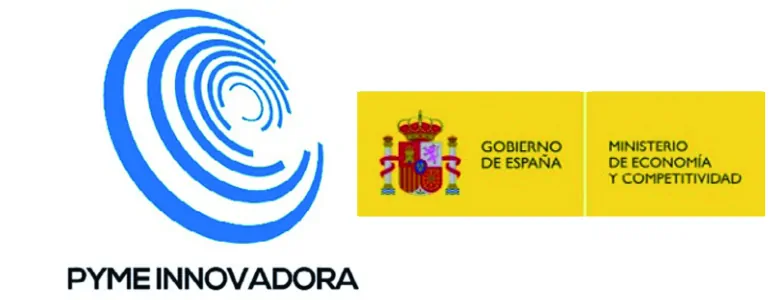
HORIZON EUROPE

 Europeo
Europeo
Expected Outcome:The project should contribute to all of the following expected outcomes:
The establishment and development of a network of and for the cultural and creative industries (CCIs)[1] in the EU Member States and associated countries, covering the diversity of the CCIs in terms of sectors, countries and company size, with particular attention to small and medium-sized enterprises[2].Well-founded and prioritised recommendations for EU policy on R&I and in other key areas for the CCIs, including to contribute to the 2030 objectives of the European Green Deal[3], notably in terms of environmental sustainability, while strengthening competitiveness and internationalisation.Structurally strengthened cooperation between CCIs across sectorial, geographical and cultural borders, as well as between CCIs and other economic sectors[4], empowering the CCIs to assume a proactive innovation-driving role, resulting in more innovations with a cultural and creative base.European CCIs ready for the green and digital transitions. Scope:To an ever greater degree, creative and cultural aspects drive innovation[5] and growth. Successful new digital and physical products an...
ver más
Expected Outcome:The project should contribute to all of the following expected outcomes:
The establishment and development of a network of and for the cultural and creative industries (CCIs)[1] in the EU Member States and associated countries, covering the diversity of the CCIs in terms of sectors, countries and company size, with particular attention to small and medium-sized enterprises[2].Well-founded and prioritised recommendations for EU policy on R&I and in other key areas for the CCIs, including to contribute to the 2030 objectives of the European Green Deal[3], notably in terms of environmental sustainability, while strengthening competitiveness and internationalisation.Structurally strengthened cooperation between CCIs across sectorial, geographical and cultural borders, as well as between CCIs and other economic sectors[4], empowering the CCIs to assume a proactive innovation-driving role, resulting in more innovations with a cultural and creative base.European CCIs ready for the green and digital transitions. Scope:To an ever greater degree, creative and cultural aspects drive innovation[5] and growth. Successful new digital and physical products and services need to be appealing and attractive, adapted to cultural traits and market needs. Similarly, societal transformations such as the green and digital transitions depend on behavioural changes, which are largely based on changes in culture and perceptions. In such processes, the human is at the centre, and the cultural and creative industries are key to success.
The goal is to facilitate the establishment of a culture and creativity driven European innovation ecosystem, with the cultural and creative industries (CCIs)[6] at its heart. Such a system should contribute decisively to Europe’s future prosperity, wellbeing, social and cultural cohesion as well as environmental sustainability.
The CCIs are in themselves an important source of growth and job creation in the EU economy, as well as a strong contributor to exports. Many European CCIs can be considered global leaders, such as in fashion, high-end and luxury goods, design, games or publishing, among others, while in other CCIs the EU punches below its weight. The European tangible and intangible cultural heritage and arts constitute an important source of competitiveness for the sector.
Thus, favourable conditions for the competitiveness of European CCIs exist. With the right policy actions, the European CCIs should be able to flourish. If mobilised to form the heart of an emerging culture and creativity driven innovation ecosystem, thriving European CCIs can be the foundation of a unique and lasting source of competitive advantage, prosperity, wellbeing and sustainability for Europe.
The basis of such an ecosystem is strong networks, with a focus on R&I, that foment cooperation across the CCIs and between the CCIs and other economic sectors. Such a system will probably experience strong network effects, therefore interoperability and scale are important aspects at this stage.
The collaborative platform to be established should be the basis to build a strong CCI innovation ecosystem with all actors working together, also becoming active participants in EU R&I activities.
The challenge is to contribute to the development of a dynamic culture and creativity driven innovation ecosystem in Europe. Proposals should show how projects will:
Establish a strong, inclusive and representative network of and for the CCIs with a focus on research and innovation. The network should extend across CCI sectors at EU[7] level, and establish connections to other important economic sectors. It should be an inclusive platform, which taps into the business potential of all CCI actors while supporting the green and digital transitions. The network should have the capacity to strengthen the innovation ecosystem, by facilitating cooperation, mutual learning and capacity building within R&I for and with the CCIs. Important aspects of the network include interoperability and scale. A collaborative platform should be used to this end.Contribute to the design and prioritisation of EU policy actions, particularly R&I policy actions, that will create favourable conditions for the growth of a dynamic and well-functioning CCI-driven innovation ecosystem. This should include at least the following: Assess needs for future R&I actions for the CCIs, and set up a priority list per sector and company size.Map the needs of the CCIs in terms of technology investment, skills, policy and regulation, etc. to allow them to contribute to the EU’s 2030 Green Deal goals as well as to the digital transition. Assess these needs at national & European levels and provide recommendations for EU level action.Identify and propose key policy actions, including suitable regulatory innovation frameworks, needed to foment the creation of a culture and creativity driven European innovation ecosystem. Proposals should also show how projects will contribute to raise awareness of the social, economic and job creation capacity of the CCIs, for example by means of demonstrations of innovations or novelties, along with other information and dissemination activities.
When developing the activities, projects should, where possible, link to, build on and further develop existing knowledge, activities, networks and structures, notably the ones funded by the European Union or developed by the CCIs. Such activities, networks and structures may include initiatives funded by Creative Europe, Digital Europe or platforms such as “Creatives Unite”.
Furthermore, proposals should show how projects will establish links to and seek synergies with closely related actions, such as relevant R&I actions funded by Horizon Europe or Horizon 2020. In particular, projects should establish links with the upcoming Knowledge and Innovation Community on cultural and creative sectors and industries[8].
Eligible costs will take the form of a lump sum as defined in the Decision authorising the use of lump sum contributions under the Horizon Europe[9].
[1] CCIs as defined in the European Parliament Resolution ‘A coherent EU policy for cultural and creative industries’:https://eur-lex.europa.eu/legal-content/EN/TXT/PDF/?uri=CELEX:52016IP0486&from=EN
[2] See https://ec.europa.eu/growth/smes/sme-definition_en
[3] See further https://ec.europa.eu/info/strategy/priorities-2019-2024/european-green-deal_en
[4] Economic sectors such as industries and services other than the CCIs.
[5] In this context, innovation should be understood as products, processes, services, technologies, organisational or business models that are made available to markets, governments and society.
[6] Idem above
[7] Idem above Including Associated Countries
[8] See https://eit.europa.eu/our-activities/call-for-eit-communities/2021
[9] The decision is published on the Funding and Tenders Portal.
ver menos
Características del consorcio
 :
La ayuda es de ámbito europeo, puede aplicar a esta linea cualquier empresa que forme parte de la Comunidad Europea.
:
La ayuda es de ámbito europeo, puede aplicar a esta linea cualquier empresa que forme parte de la Comunidad Europea.
Características del Proyecto
Gastos relacionados con el personal que trabaja directamente en el proyecto basado en las horas efectivas dedicadas, basado en el coste empresa y ratios fijos para determinados empleados como los dueños de la compañía.
Pagos a terceros externos para realizar tareas específicas que no pueden ser realizadas por los beneficiarios del proyecto.
Incluyen la adquisición de equipos, amortizaciones, material, licencias u otros bienes y servicios necesarios para la ejecución del proyecto
Gastos diversos como costes financieros, certificados de auditoría o participación en eventos no cubiertos por otras categorías
Gastos generales no asignables directamente al proyecto (como electricidad, alquiler u oficina), calculados como un 25% fijo sobre los costes directos elegibles (excepto subcontratación).
Características de la financiación
Para el presupuesto subvencionable la intensidad de la ayuda en formato fondo perdido podrá alcanzar como minimo un 100%.
Información adicional de la convocatoria
Otras ventajas
Ayudas Similares

| Próximamente

| Abierta

| Abierta

